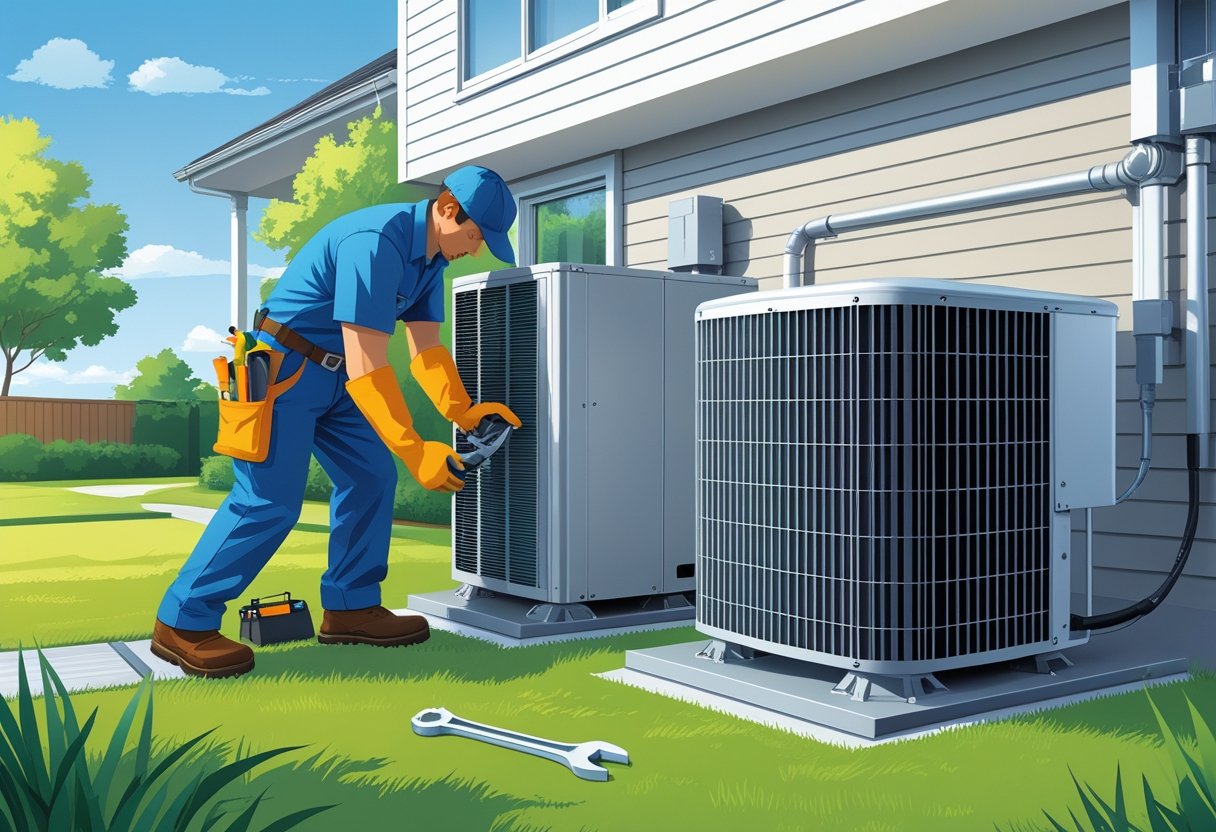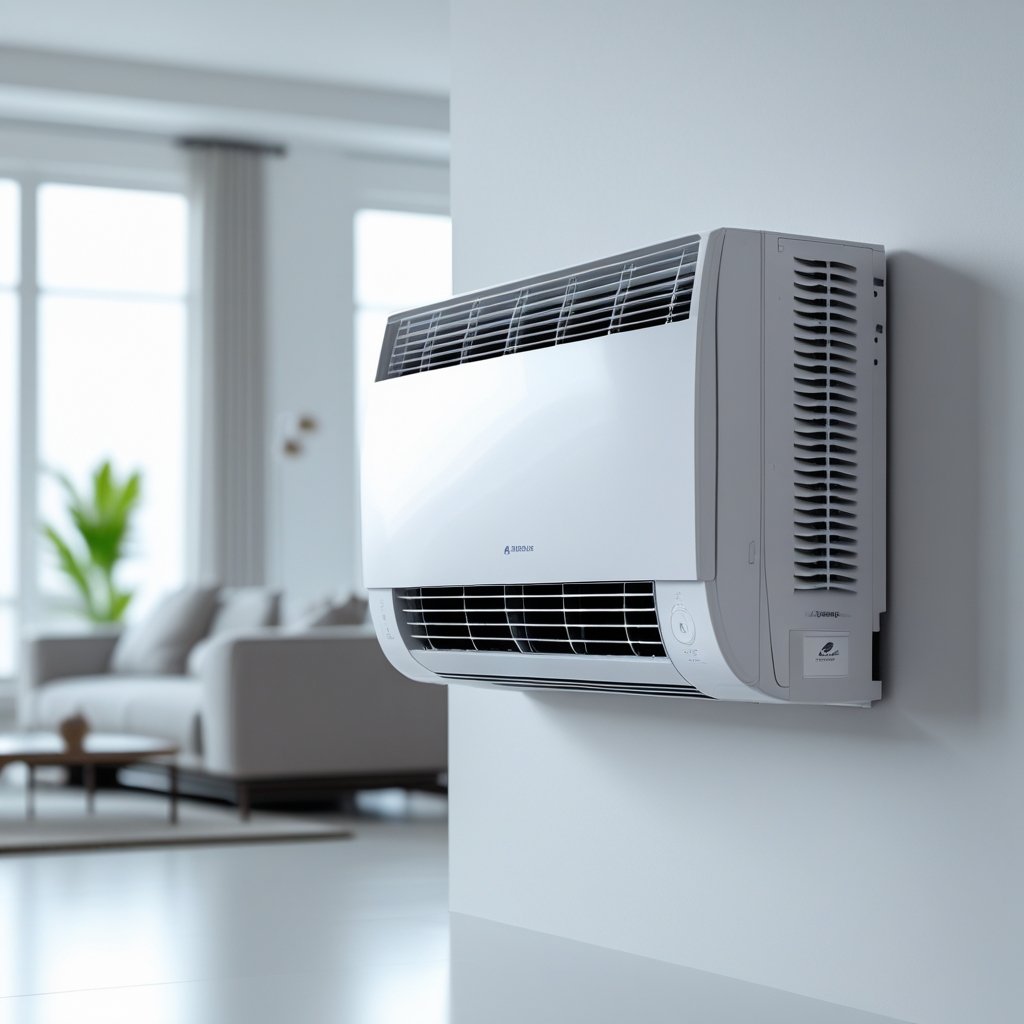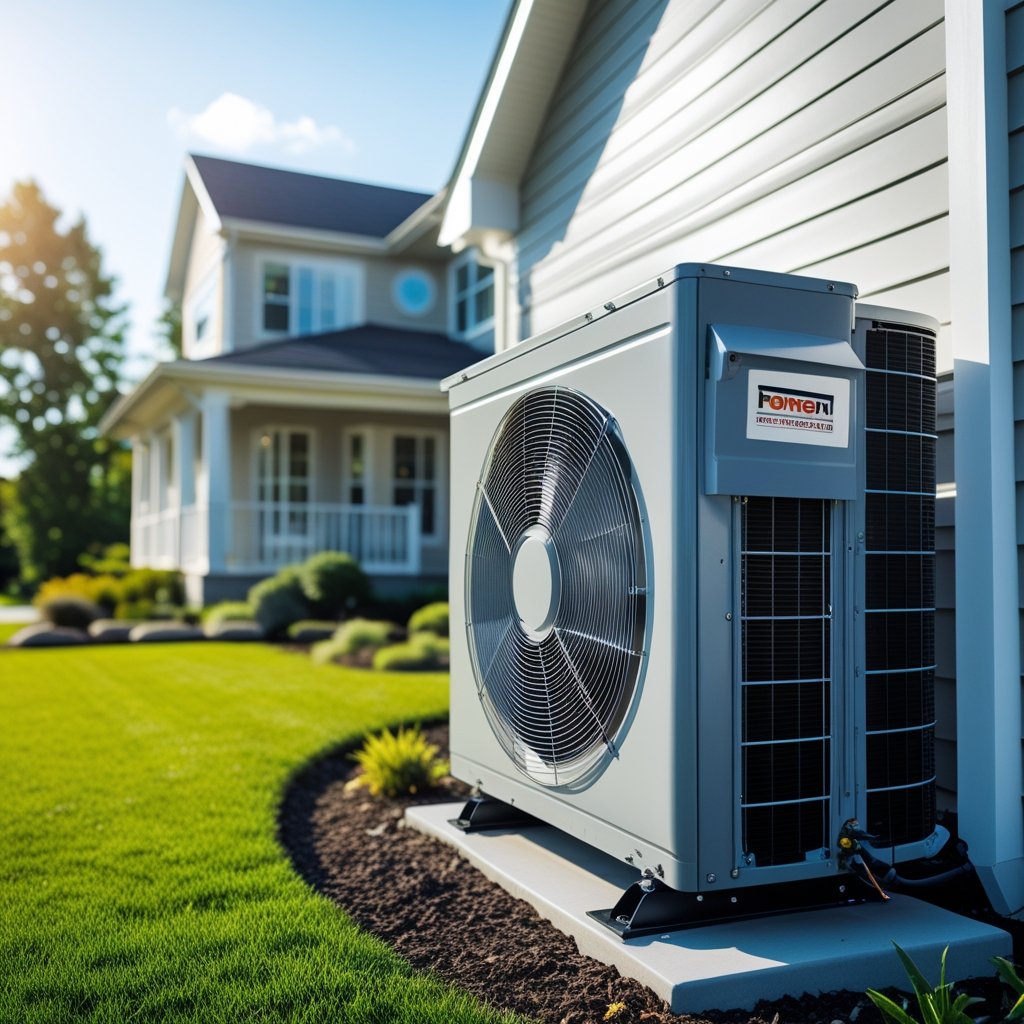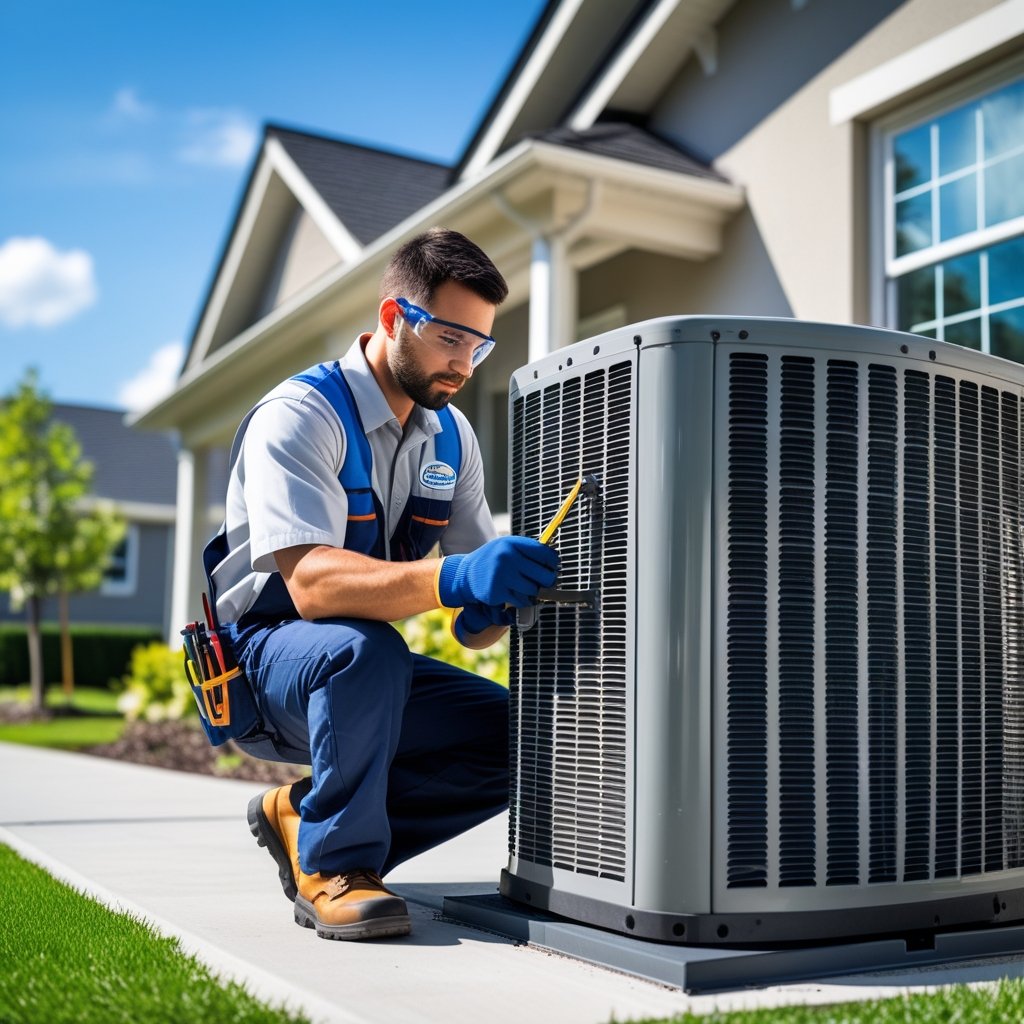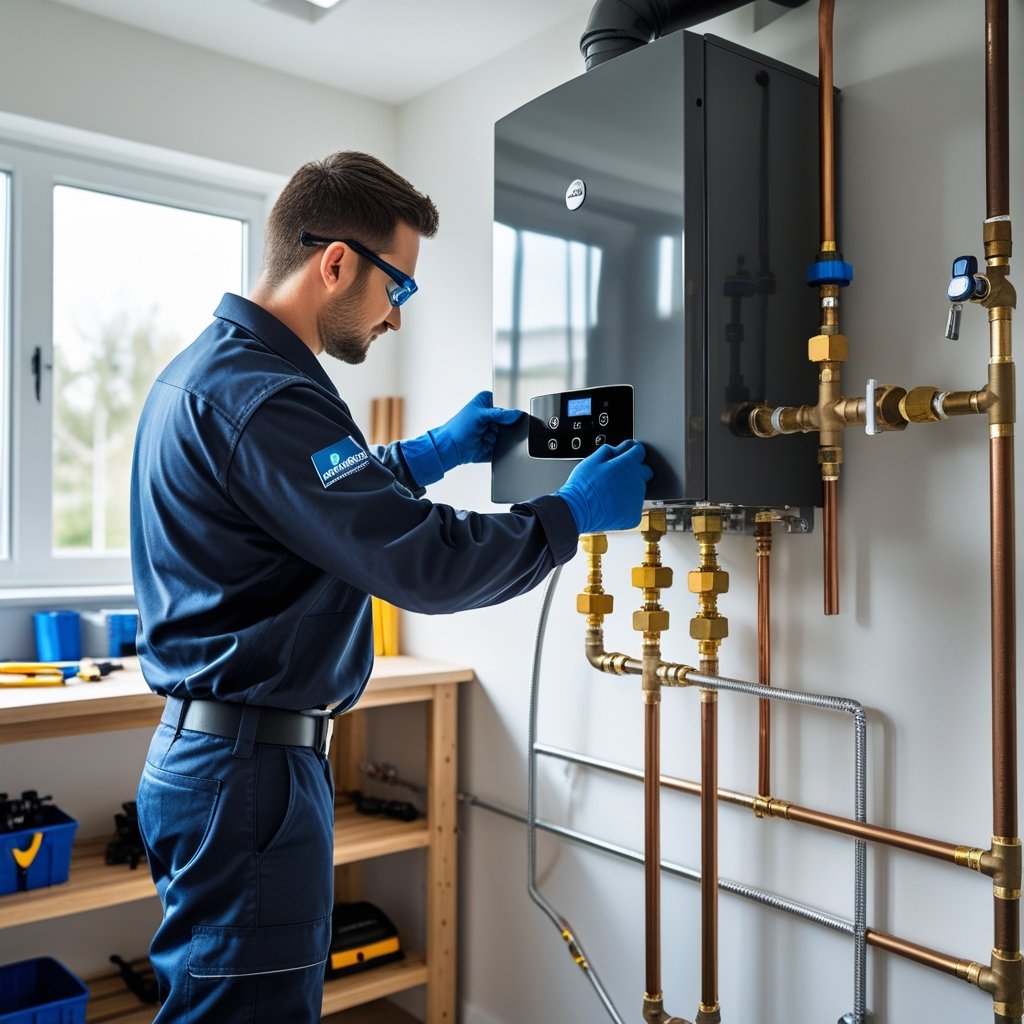If your heat pump is getting old or just not keeping up, you might be thinking about a heat pump replacement. A new heat pump can boost your home's energy efficiency, lower your utility bills, and give you reliable heating and cooling all year. That’s a real upgrade for both comfort and cost.
When you’re ready to replace your heat pump, you want the job done right—no hidden costs, no headaches. Leo Kob Co., serving South Central Pennsylvania since 1904, sticks to honest pricing and quality work so you get real value. Their team makes sure your new system actually fits your home and runs efficiently for the long haul.
Upgrading can also open the door to rebates and future savings. Whether you’re in Lancaster, Harrisburg, or York, keeping your HVAC system in shape is key for staying comfortable through all the wild weather.
What Is Heat Pump Replacement?
Heat pump replacement is really just taking out your old or failing heat pump and putting in a new one. There are a few careful steps, but the goal is to make sure your system works right and keeps your energy bills in check. If you know how heat pumps work and when it’s time to swap them out, you can dodge bigger headaches and costs down the road.
Definition of Heat Pump Replacement
Heat pump replacement means removing your current system and installing a new one. Usually, this happens when the old unit is worn out, inefficient, or just not worth repairing anymore.
A new heat pump can bring back comfort and lower your energy bills. Newer models often have better energy efficiency and might even get you rebates. Leo Kob Co. handles replacement professionally so your new system actually fits your home and your needs.
The process? Disconnect the old unit, put in the right size heat pump, and test everything to make sure it’s running smoothly.
How Heat Pumps Work
Heat pumps move heat around using electricity. In the winter, they pull warmth from the outside air and bring it in. In summer, they do the opposite—pushing heat out to keep your place cool.
Since they move heat instead of creating it, they use less energy than old-school furnaces and ACs. They’re great for mild climates, but newer models can handle cold snaps, too.
The main parts? Compressor, refrigerant, and coils. These work together to move heat, keeping your home comfortable no matter the season.
Replacement vs. Repair
Not sure if you should repair or replace your heat pump? If it’s just a small issue—like a broken fan or low refrigerant—repair might do the trick. But if your heat pump is old, keeps breaking down, or is really inefficient, replacement is probably the smarter move.
Watch out for frequent breakdowns, rising energy bills, or rooms that never seem to hit the right temperature. Newer heat pumps use less energy and break down less, so you’ll probably save money in the long run.
Leo Kob Co. will check your system and lay out your options without the hard sell. You’ll get advice based on what actually makes sense for your home and budget.
Signs You Need a Heat Pump Replacement
If your heat pump isn’t keeping you comfortable like it used to, that’s a red flag. More energy use, constant repairs, and higher bills are all signs it might be time for a new one. Paying attention now can help you avoid bigger issues later.
Decreased Efficiency
When your heat pump takes forever to heat or cool your home, it’s probably losing efficiency. Maybe your rooms don’t reach the temp you set, or the system just won’t stop running.
Old heat pumps struggle to keep temperatures steady because parts wear out. This leads to uneven heating or cooling and, honestly, it’s just uncomfortable. If your system is over 10 years old, newer ones almost always use less energy.
Upgrading an inefficient heat pump can save you money with better energy use. Leo Kob Co. can take a look and see if an upgrade makes sense for your budget.
Frequent Breakdowns
If you’re calling for repairs all the time, your heat pump might be on its last legs. Constant breakdowns get expensive and leave you without heating or cooling when you need it.
You might notice frozen coils, weird noises, or the system just shutting off. These are signs parts are worn out and not reliable anymore.
When repairs keep piling up, it usually means the whole system is aging out. A new heat pump means fewer repairs and more peace of mind. Leo Kob Co. can check your system and let you know when it’s time to move on.
Rising Energy Bills
Sudden spikes in your electric bill—especially if you haven’t changed how you use your home—can mean your heat pump is working overtime. When efficiency drops, the system burns more energy to do the same job.
Look for:
- Higher bills in winter or summer
- The heat pump running longer cycles
- No changes to your thermostat, but costs still climb
An inefficient heat pump can really drive up your bills. Upgrading can lower your monthly costs and improve energy use. If regular maintenance isn’t helping and bills keep rising, a replacement might save you money in the long run.
Benefits of Replacing Your Heat Pump
Swapping out your heat pump can make a real difference in comfort, energy use, and how often you have to call for repairs. New models come with upgrades that help you save money and stay comfortable year-round.
Improved Energy Efficiency
Old heat pumps lose efficiency as they age. A modern, high-efficiency model can cut your energy bills by as much as 30%. New systems use advanced technology to move heat better, whether you’re heating or cooling.
You’ll use less electricity and get better performance. Many new models qualify for energy rebates, too. At Leo Kob Co., we help you pick a system that fits your home and family, so you’re not wasting money on features you don’t need.
Enhanced Home Comfort
A new heat pump gives you more reliable and consistent heating and cooling. You’ll notice fewer hot or cold spots since modern units keep temps steady. Some even have zoned controls, so you can dial in comfort room by room.
They’re quieter, too. You won’t have the system interrupting your day with loud cycling. And with better filtration, you’ll see improved indoor air quality and less dust or allergens floating around.
Reduced Repair Costs
The older your heat pump, the more repairs you’ll face—and the pricier those repairs get. Parts for old models get tough to find, and service can drag out. New heat pumps break down less and usually come with a manufacturer warranty.
Upgrading helps you avoid emergency repairs and uncomfortable outages, especially during extreme weather. Leo Kob Co. will let you know when it’s time to stop pouring money into repairs and just get a better system.
Choosing the Right Heat Pump for Replacement
Picking the right heat pump isn’t one-size-fits-all. You’ve got to consider your home, the system type, its size, and how energy-efficient it is. Get these right, and you’ll save money and stay comfy all year.
Types of Heat Pumps
A few types are out there. Air-source heat pumps are the most common—they use outside air to heat or cool your home. They’re affordable and work well in most climates.
Ground-source or geothermal heat pumps tap into the earth’s steady temps for more efficient heating and cooling. They cost more up front but can pay off in the long run.
There are also mini-split heat pumps. These are perfect if you don’t have ductwork or want to control temps in specific rooms.
Your choice comes down to your home’s size, local weather, and what you want to spend. Leo Kob Co. can walk you through the options and help you pick what fits.
Sizing and Capacity Considerations
You need a heat pump that’s the right size. Too small, and it’ll struggle. Too big, and it’ll cycle on and off, wasting energy and wearing out faster.
Pros figure out the right size using your home’s square footage, insulation, windows, and climate. They measure this in BTUs (British Thermal Units).
Checking your current system’s size and how it performs helps pick the new one. Leo Kob Co. does proper sizing so you don’t end up with an expensive mistake.
Energy Efficiency Ratings
Efficiency saves you money every month. Look for the SEER (Seasonal Energy Efficiency Ratio) for cooling and HSPF (Heating Seasonal Performance Factor) for heating.
Higher SEER and HSPF numbers mean better efficiency. Most new heat pumps are rated SEER 14–24 and HSPF 8–13.
The Energy Star label means the system meets strict standards. Efficient units might get you rebates or tax credits, too.
Go for a high-efficiency heat pump if you want lower bills and a smaller carbon footprint.
The Heat Pump Replacement Process
Replacing a heat pump isn’t just swapping boxes. Each step matters to make sure your new system runs right and keeps your home comfortable.
Assessment and Planning
First, a pro checks your current heat pump and heating system. They look at size, efficiency, and condition to see if you really need a replacement. They’ll also check your home’s insulation, room sizes, and overall heating and cooling needs.
You’ll talk about your preferences and budget. This is when you pick a heat pump with the right size and efficiency. Your installer might point out models that qualify for rebates, which is always nice.
Once you pick a plan, you’ll know when the work’s happening and if you need any electrical or ductwork updates. This upfront planning helps the job go smoothly.
Removal of the Old Unit
On installation day, the old heat pump gets safely disconnected. Techs shut off power and refrigerant lines, following environmental rules. They’ll handle disposal or recycling, so you don’t have to worry about it.
They prep the area for the new unit—fixing any damaged ductwork or pads if needed. This makes sure the new system sits right and works as it should.
If everything’s planned well, removal shouldn’t disrupt your day much. Leo Kob Co. techs are careful and respect your space.
Installation of the New Heat Pump
Now the new unit gets set up, inside or outside depending on the system. Techs connect electricity, refrigerant, and ductwork, following the manufacturer’s specs for safety and efficiency.
Once it’s in, they test the system—checking airflow, temperature, and balance. If something’s off, they’ll tweak it until it’s right.
You’ll get a quick walkthrough on how to use and maintain your new heat pump. Regular care keeps it running longer. Leo Kob Co. even offers maintenance plans if you don’t want to think about it.
Cost Factors for Heat Pump Replacement
Replacing a heat pump isn’t just about the sticker price. You’ve got the unit, installation, and maybe a few extras to budget for. Knowing what goes into the cost helps you plan and avoid surprises.
Unit Price Range
Heat pump prices are all over the map, depending on size, brand, and efficiency. Smaller units for apartments might start near $3,000. Bigger or super-efficient ones? $5,000 to $7,000 or more.
If you want a system that handles both heating and cooling, expect to pay a bit more. High-end models with smart controls or variable speed compressors bump up the price, but they can save you energy.
Warranty length and special features like noise reduction or weatherproofing also affect the cost. When you get a quote, ask for all the details. Leo Kob Co. helps you find a unit that fits your home and budget—no pressure to buy stuff you don’t need.
Labor Costs
Labor for a heat pump replacement usually runs from $1,000 to $3,000. It depends on how complex your system is, how tricky the installation spot is, and local rates. Straightforward jobs cost less.
If you need ductwork changes or electrical upgrades, that adds to the price. Removing an old unit from a tight spot can also bump up labor costs.
Experienced pros get it done right the first time. Leo Kob Co. keeps pricing transparent and fair, with no surprise fees. Their team serves South Central Pennsylvania, so scheduling is easy and you get trusted local service.
Additional Materials
Besides the heat pump and labor, you’ve got a few extra materials that can bump up the total cost. Think refrigerant lines, mounting brackets, electrical wiring, thermostats—the usual suspects. Sometimes you’ll need a new condenser pad or extra insulation around the pipes.
If your place needs new ductwork, that’s going to add to both materials and labor. Some setups call for special wiring or even new circuit breakers for safety, which isn’t always cheap.
Here’s a ballpark on material costs:
- Refrigerant lines: $200–$500
- Electrical upgrades: $100–$400
- Mounting equipment: $50–$200
Using solid materials means your new heat pump runs safely and doesn’t give you headaches later. Leo Kob Co. sticks with quality parts and careful installation—no shortcuts.
Hiring a Professional for Heat Pump Replacement
Swapping out a heat pump isn’t a simple weekend project. It takes know-how and the right touch to get it running right and keep it around for years. Picking the right professional means checking qualifications, asking good questions, and making sure you understand the warranty and service terms. It’s about protecting your investment, not just ticking a box.
Selecting a Qualified Contractor
First off, look for contractors with the right licenses and a solid reputation in South Central Pennsylvania. You want someone who’s replaced heat pumps before and doesn’t play games with pricing.
Ask if they stick to local codes and handle permits for you. It’s smart to choose someone who uses proper tools and quality parts—nobody wants to deal with leaks or a system that just limps along.
Leo Kob Co.’s been doing this for over a century. They’re known for straight talk and professionalism. Their techs actually explain your options and think about what’s best for your house—not just what’s easiest.
Questions to Ask Before Hiring
Don’t be shy—ask which heat pump they’d pick for your home and why. Get a sense of how long the job will take and if they’ll clean up after themselves.
See if they’ll give you a detailed estimate with everything spelled out—no sneaky fees. Ask about energy efficiency ratings, possible rebates, and how they handle safety. Disposal of your old equipment? That should be in the plan too.
Maintenance matters. Ask about maintenance plans. A good contractor won’t just install and disappear—they’ll help you keep the system running smoothly and avoid big repair bills.
Warranty and Service Agreements
Warranties can get confusing, so make sure the contractor lays it all out: what’s covered, for how long, and whether it’s just parts or labor too. Some only last a year, others stretch longer.
Service agreements can be a lifesaver. Usually, they include yearly check-ups and faster repair service. Catching small stuff early saves money and keeps your system alive longer.
Leo Kob Co. keeps things simple—clear service agreements, no fine print. They want your heat pump to run well for years, and they actually stand by their work.
Maintenance Tips After Heat Pump Replacement
Once you’ve got a new heat pump, don’t just forget about it. Regular care—cleaning, checking parts, swapping filters—makes a real difference. Seasonal tune-ups keep things efficient and reliable.
Routine Maintenance Checklist
Start by keeping the area around your heat pump clear. Get rid of leaves, dirt, or anything crowding the outdoor unit so air can move freely. Make sure it’s sitting level and mounted tight.
Check electrical connections for loose wires—tighten them if you can, or call in a pro if something looks off. Give the evaporator and condenser coils a good cleaning every year to keep heat moving like it should.
Fan blades should spin smoothly and not hit anything. Test your thermostat too—make sure it’s actually talking to your new system. Leo Kob Co. can handle these inspections if you’d rather not mess with it.
Filter Replacement Guidance
Changing your filter is honestly one of the easiest ways to keep your heat pump happy. Check it every month, especially when you’re running the system hard in winter or summer.
Swap the filter out at least every 90 days, or sooner if it’s looking grimy. Stick with filters the manufacturer recommends—they fit better and work best. A clean filter means your heat pump isn’t working overtime, and your energy bills will thank you.
Got pets or allergies? Change the filter more often. It helps keep the air cleaner and the system running longer.
Seasonal Inspection Recommendations
Before winter and summer hit, schedule a pro inspection. It’s the best way to spot worn parts or leaks that could drag down efficiency. The tech should check refrigerant levels and clean the coils thoroughly.
Don’t overlook your ductwork—leaks or blockages can mess with airflow and drive up bills.
Leo Kob Co. offers thorough seasonal inspections, from refrigerant checks to fine-tuning everything. Their techs know the quirks of South Central Pennsylvania weather, so your heat pump’s ready for whatever comes.
How to Extend the Life of Your New Heat Pump
If you want your heat pump to last, regular upkeep is the name of the game. Swap or clean filters every month or so, and your system will breathe easier and work better.
Keep the outdoor unit free of leaves and junk. Good airflow means less stress on the system.
Book an annual HVAC tune-up with a company you trust—like Leo Kob Co. They’ll catch small stuff before it turns into expensive repairs. During the visit, they’ll check refrigerant, electrical connections, and controls.
Don’t forget about insulation. A well-sealed home helps your heat pump do its job without working overtime.
Here’s a quick hit list:
- Change or clean filters regularly
- Keep the outdoor unit clear
- Get yearly professional inspections
- Seal up leaks and insulate
- Don’t crank the thermostat to extremes
Stick with these basics and you’ll protect your investment. Leo Kob Co. focuses on quality work at a fair price, helping your heat pump last and cut down on energy waste.
Common Mistakes to Avoid During Heat Pump Replacement
A big mistake? Picking the wrong size heat pump. Too big or too small, and you’ll pay for it with higher bills and uneven comfort.
Sloppy installation is another problem. If the setup’s bad, expect breakdowns and a shorter system life. Go with pros like Leo Kob Co. who know what they’re doing.
Don’t forget to look for rebates. Local programs often give cash back for energy-efficient upgrades—why leave money on the table?
Ignoring your old ductwork or electrical setup can come back to bite you. If they’re not up to snuff, you’ll face extra costs later. Have your contractor check everything first.
And don’t rush into replacing your heat pump without considering maintenance. Sometimes a tune-up is all you need. Leo Kob Co. usually suggests checking this before you spend big.
MistakeWhy It MattersHow to AvoidWrong Size UnitInefficient operation, high costsGet a professional load calculationPoor InstallationBreakdowns, shorter lifespanHire skilled, local expertsMissing RebatesLosing out on savingsAsk about local energy programsIgnoring Duct/ElectricalExtra costs and compatibility issuesHave a thorough pre-install checkSkipping Maintenance ReviewMay replace too soon or unnecessarilyConsult an expert before replacing
Understanding Rebates and Incentives for Replacing a Heat Pump
Replacing your heat pump? You might snag a rebate or incentive, which takes some of the sting out of upgrading to something more efficient. State and local agencies want you to use less energy, so they’re willing to help out.
Here’s what’s out there:
- Utility company rebates: Your electric company could offer cash back for a high-efficiency heat pump.
- State incentives: Pennsylvania sometimes covers part of your purchase or install.
- Federal tax credits: You might get a tax break for making your home more energy efficient.
Check the details before you start—most programs have efficiency requirements and want you to use certified installers. Leo Kob Co. (they’ve been around since 1904) can help you sort through the paperwork and find the right deals.
Here’s a quick look at possible savings:
Incentive TypePossible SavingsNotesUtility Rebate$300 – $700Varies by electric providerState Incentive$250 – $500Requires pre-approvalFederal Tax CreditUp to 30% of costLimits apply
Working with a local pro means fewer headaches. Leo Kob Co. gives honest advice and fair prices, so your replacement is a smart move.
Give them a call if you want to see how much you could save.
Frequently Asked Questions
There’s a lot to figure out when replacing a heat pump—size, efficiency, installation, and what works for your home. You might wonder about costs, whether to repair or replace, and how to find the right team.
What are the factors that influence the cost of replacing a heat pump?
Biggest ones? Size and efficiency of the unit, how tricky the install is, and whether you need upgrades to your ductwork or electrical system. Location can nudge labor costs up or down too.
How do I find a reliable heat pump replacement service in my area?
Look for licensed, insured techs with good reviews. Family businesses like Leo Kob Co. in South Central PA have a reputation for honest work and fair prices.
What's the price range for replacing a heat pump and air handler together?
Plan on $5,000 to $10,000 or more, depending on the units and installation needs. You’ll need an in-home quote for an exact number.
Can you estimate the average expense for a 3-ton heat pump replacement?
For a 3-ton system, you’re looking at $4,000 to $7,500, give or take. Brand, efficiency, and install details all play a part.
At what point should I consider replacing my heat pump versus repairing it?
If your heat pump’s over 10 years old, breaks down a lot, or repairs cost more than half the price of a new one, it’s probably time. Newer systems usually run more efficiently, too.
Is it possible to replace only the heat pump and not the entire system?
Yeah, you usually can swap out just the outdoor heat pump unit—assuming your indoor air handler’s still working well and matches up with the new one. It might save you a chunk of cash, though you’ll definitely want a pro to make sure everything’s compatible before you commit.

